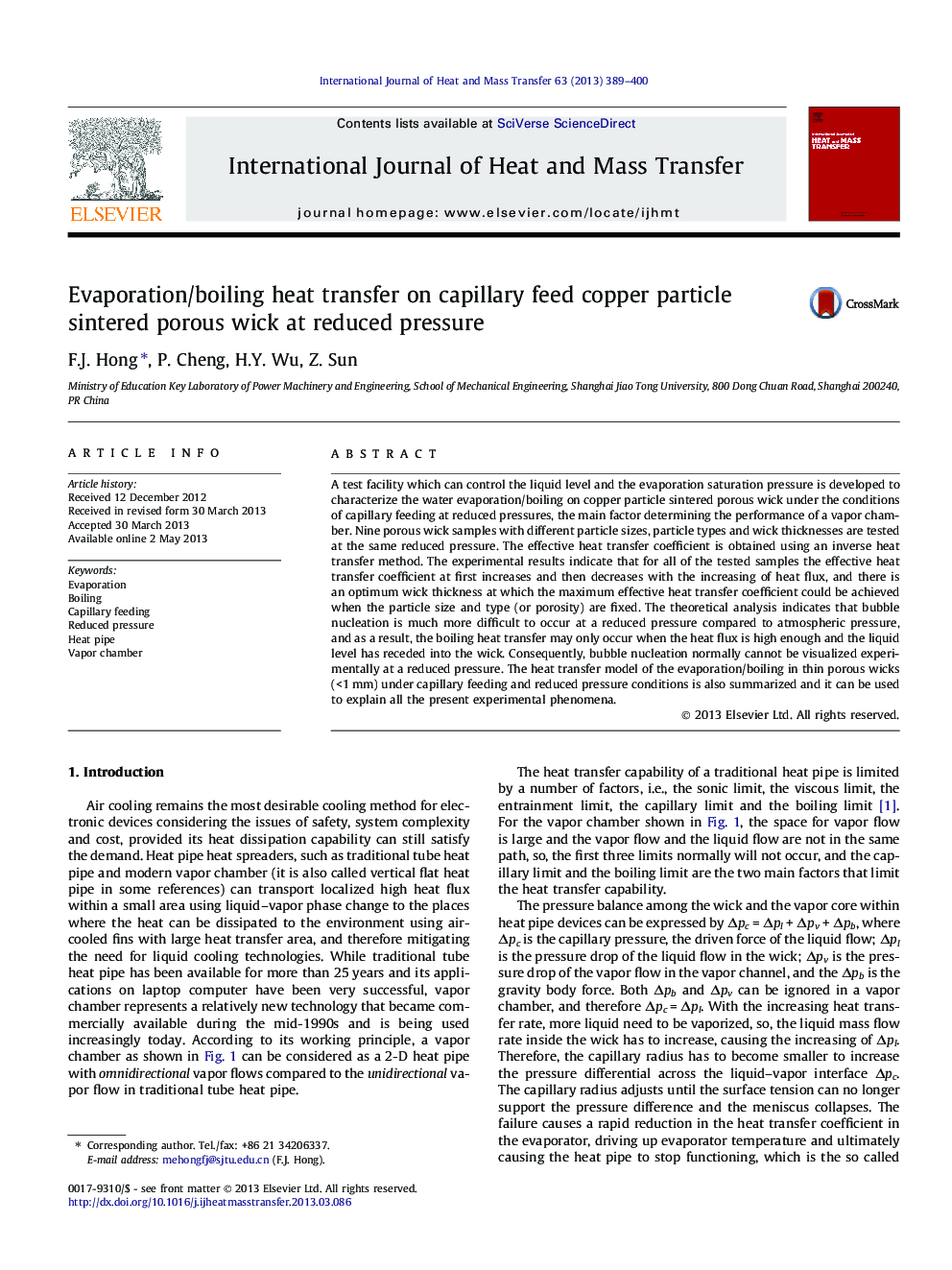| Article ID | Journal | Published Year | Pages | File Type |
|---|---|---|---|---|
| 658175 | International Journal of Heat and Mass Transfer | 2013 | 12 Pages |
A test facility which can control the liquid level and the evaporation saturation pressure is developed to characterize the water evaporation/boiling on copper particle sintered porous wick under the conditions of capillary feeding at reduced pressures, the main factor determining the performance of a vapor chamber. Nine porous wick samples with different particle sizes, particle types and wick thicknesses are tested at the same reduced pressure. The effective heat transfer coefficient is obtained using an inverse heat transfer method. The experimental results indicate that for all of the tested samples the effective heat transfer coefficient at first increases and then decreases with the increasing of heat flux, and there is an optimum wick thickness at which the maximum effective heat transfer coefficient could be achieved when the particle size and type (or porosity) are fixed. The theoretical analysis indicates that bubble nucleation is much more difficult to occur at a reduced pressure compared to atmospheric pressure, and as a result, the boiling heat transfer may only occur when the heat flux is high enough and the liquid level has receded into the wick. Consequently, bubble nucleation normally cannot be visualized experimentally at a reduced pressure. The heat transfer model of the evaporation/boiling in thin porous wicks (<1 mm) under capillary feeding and reduced pressure conditions is also summarized and it can be used to explain all the present experimental phenomena.
